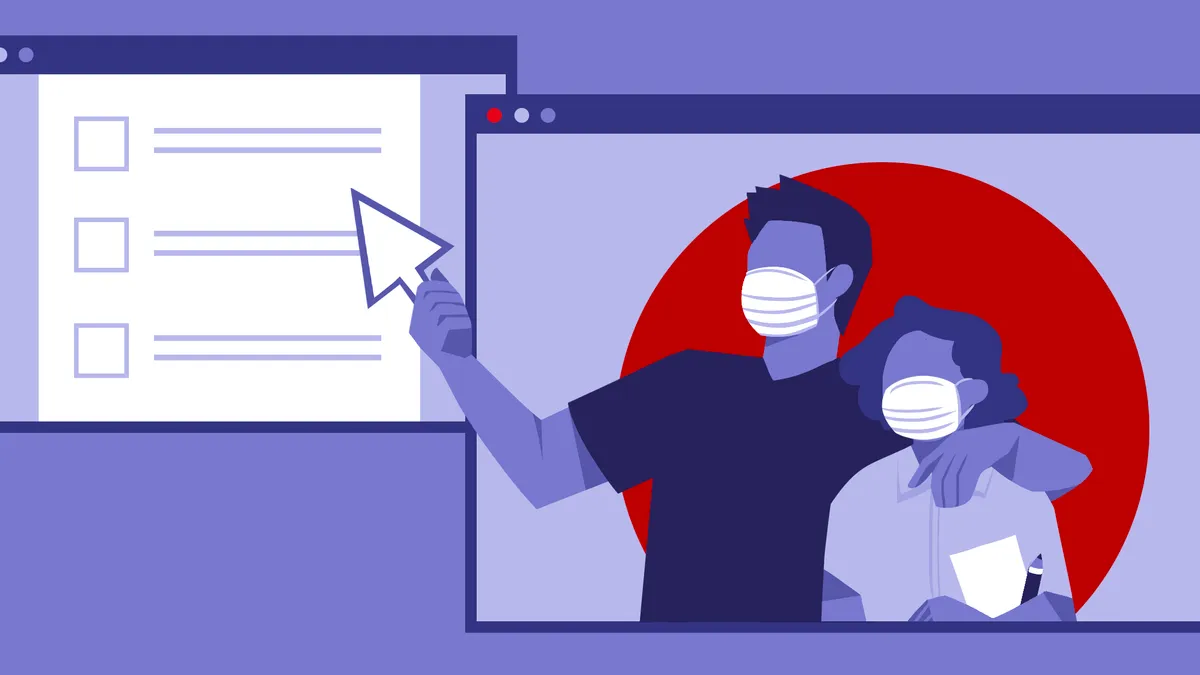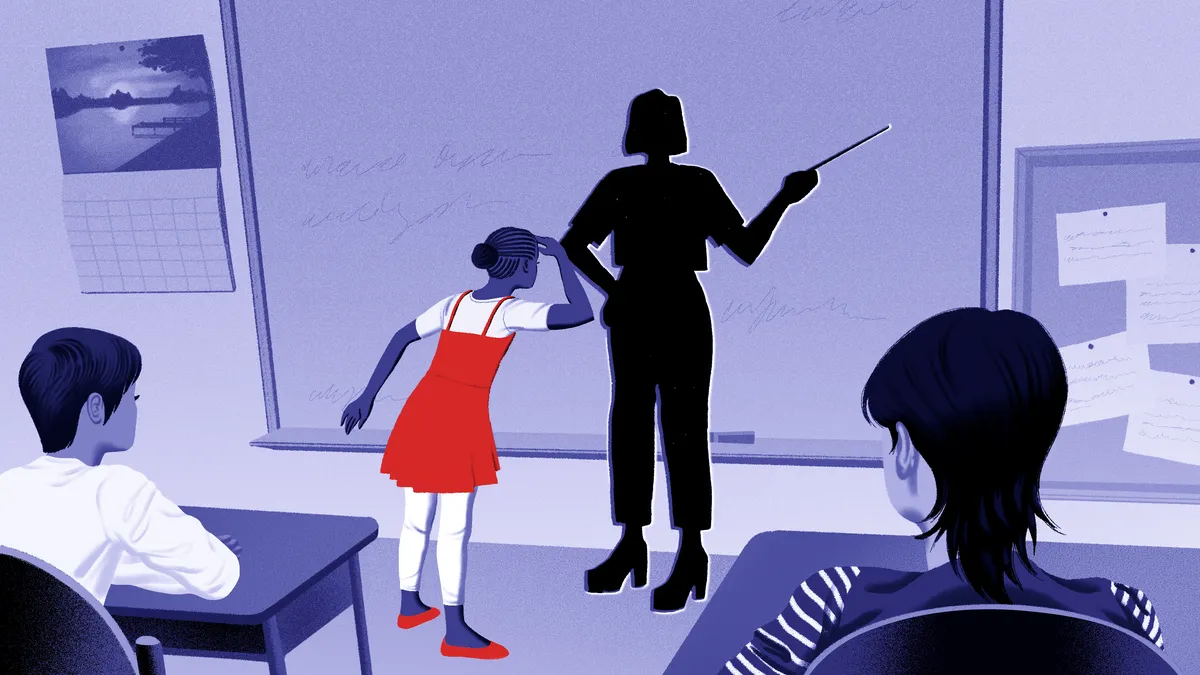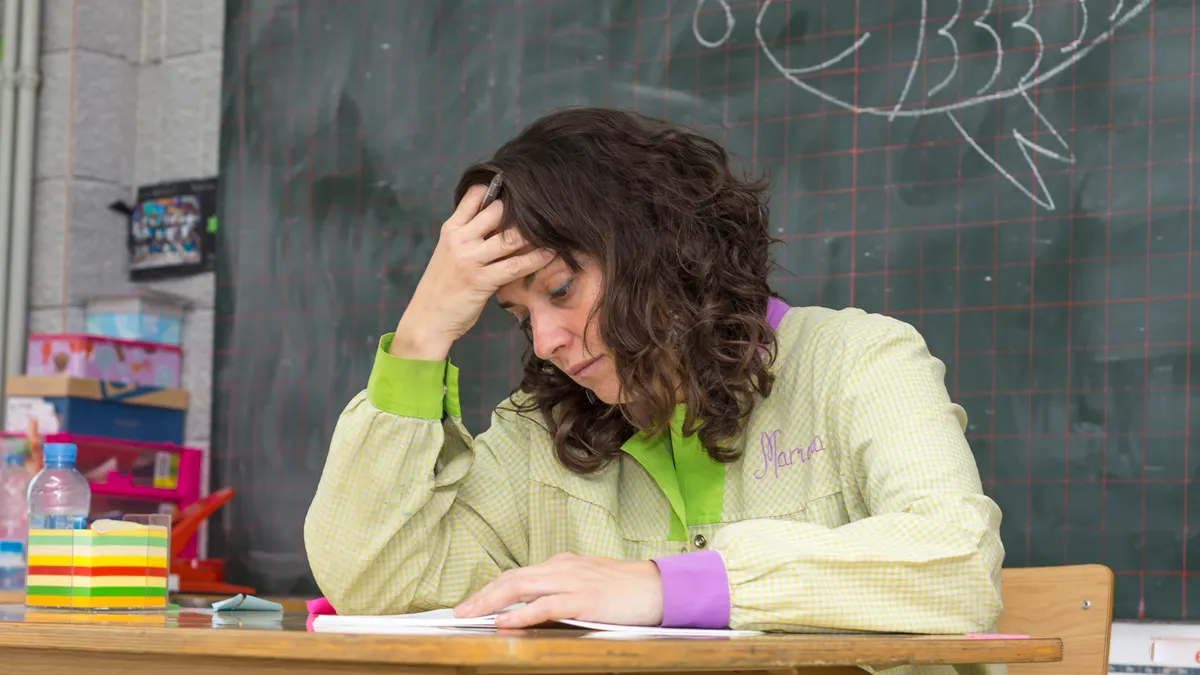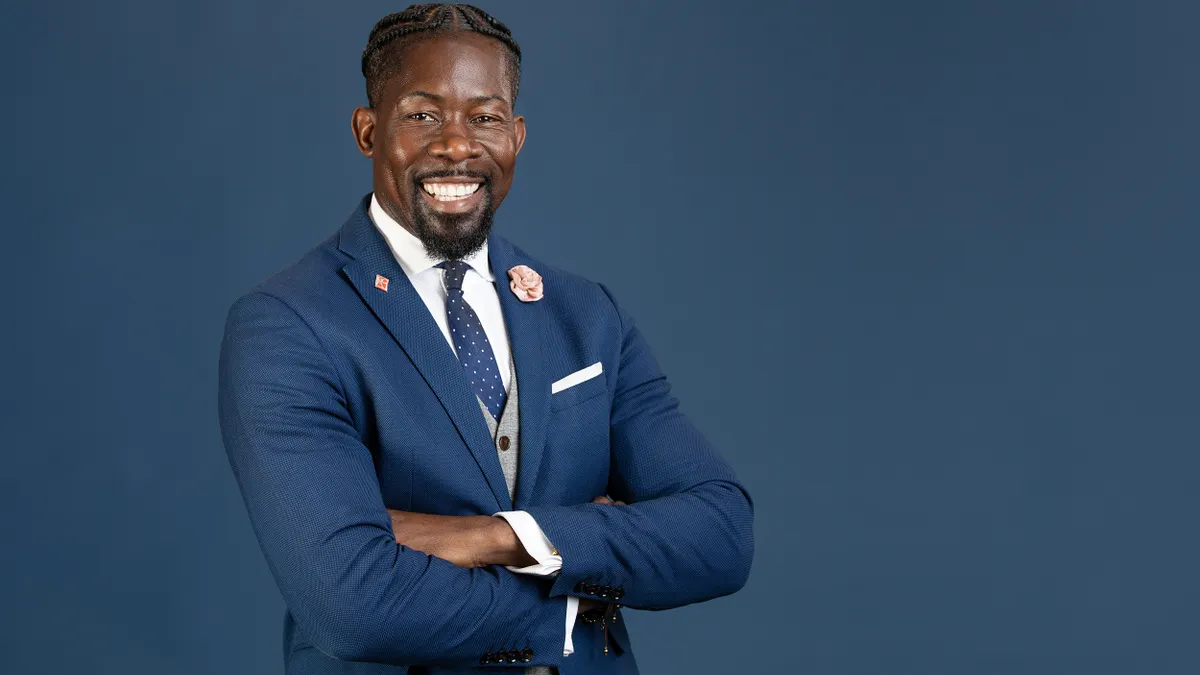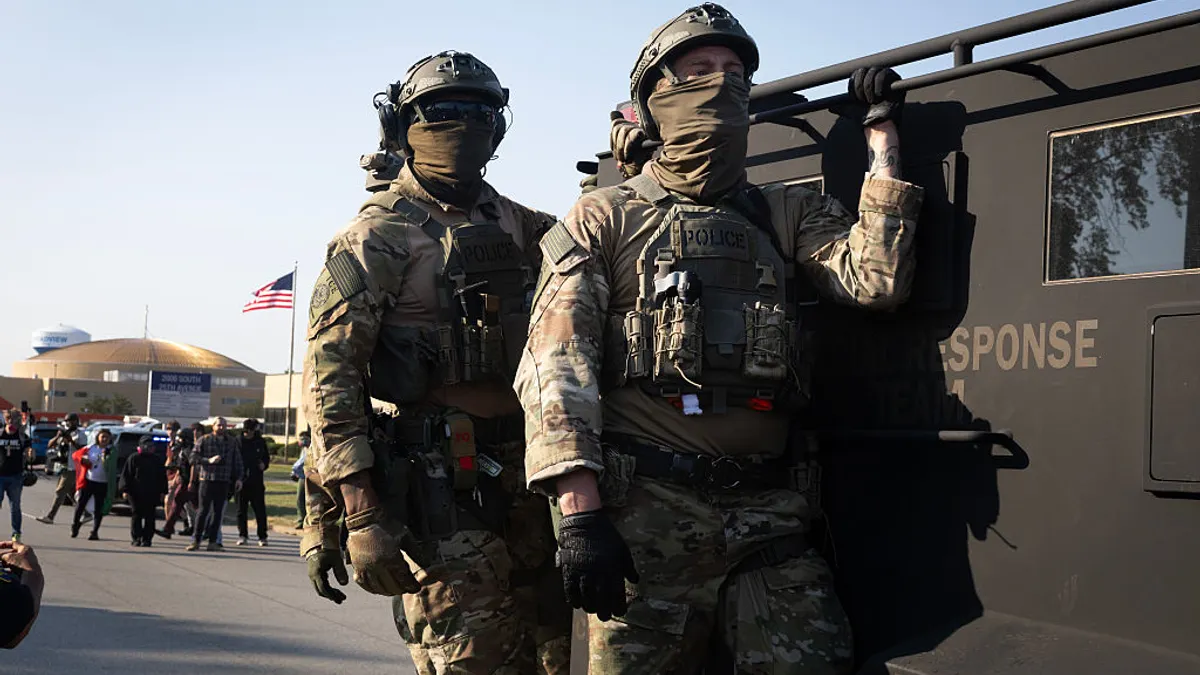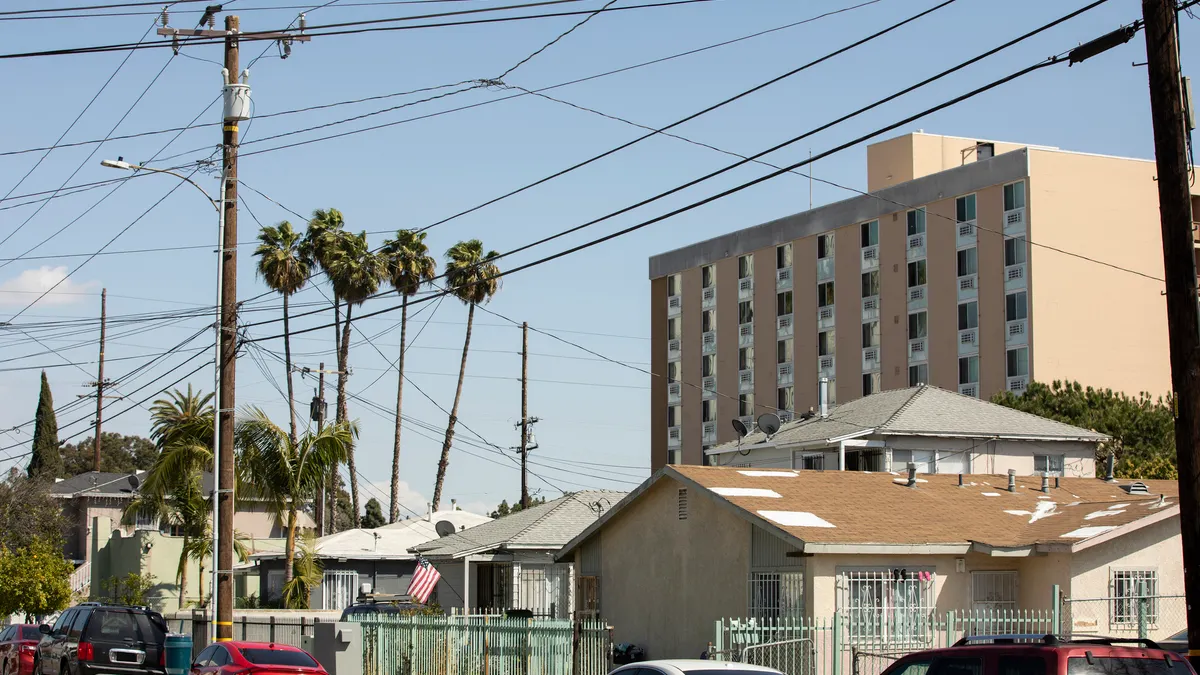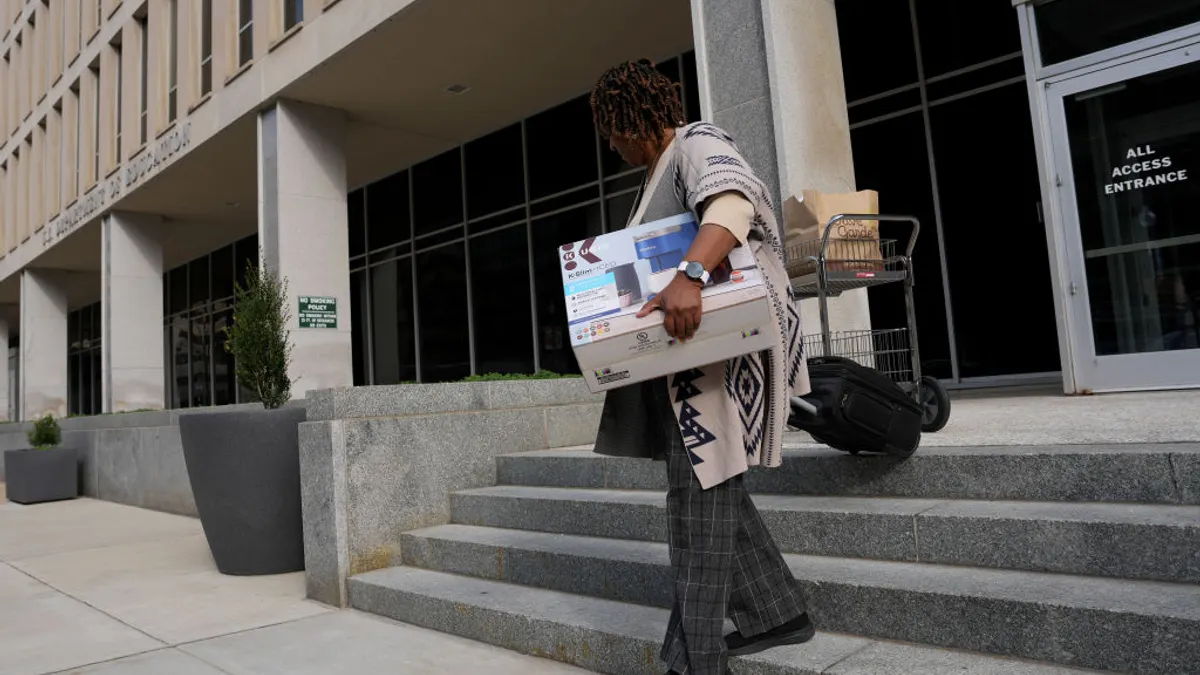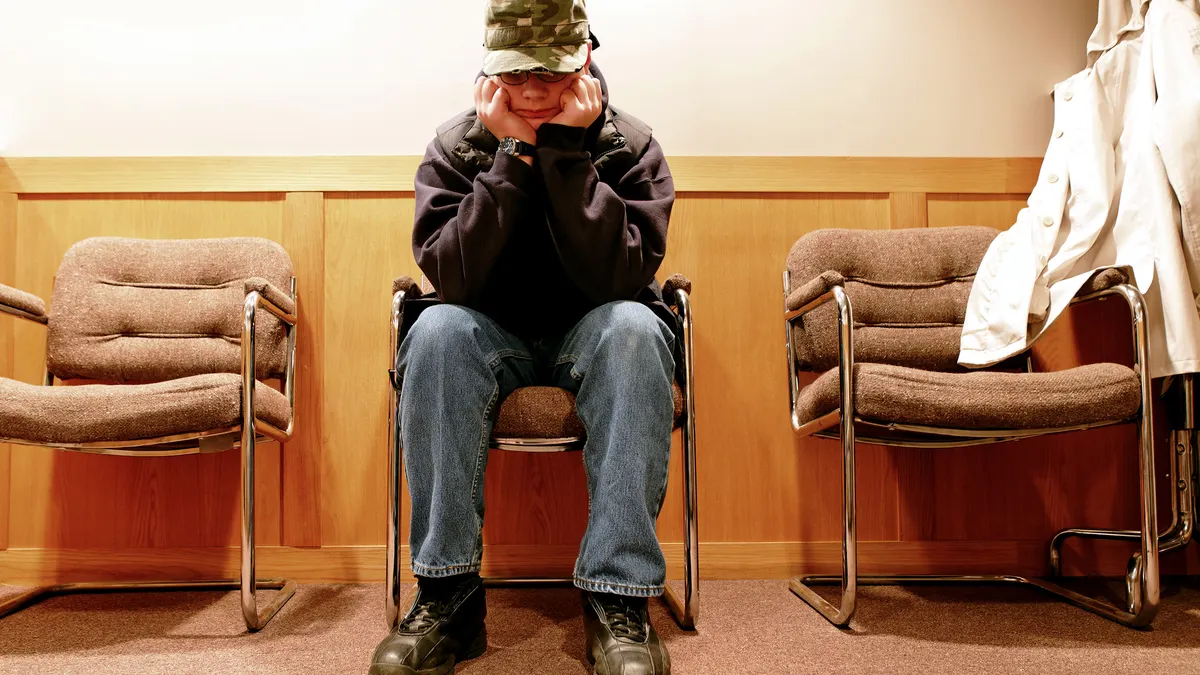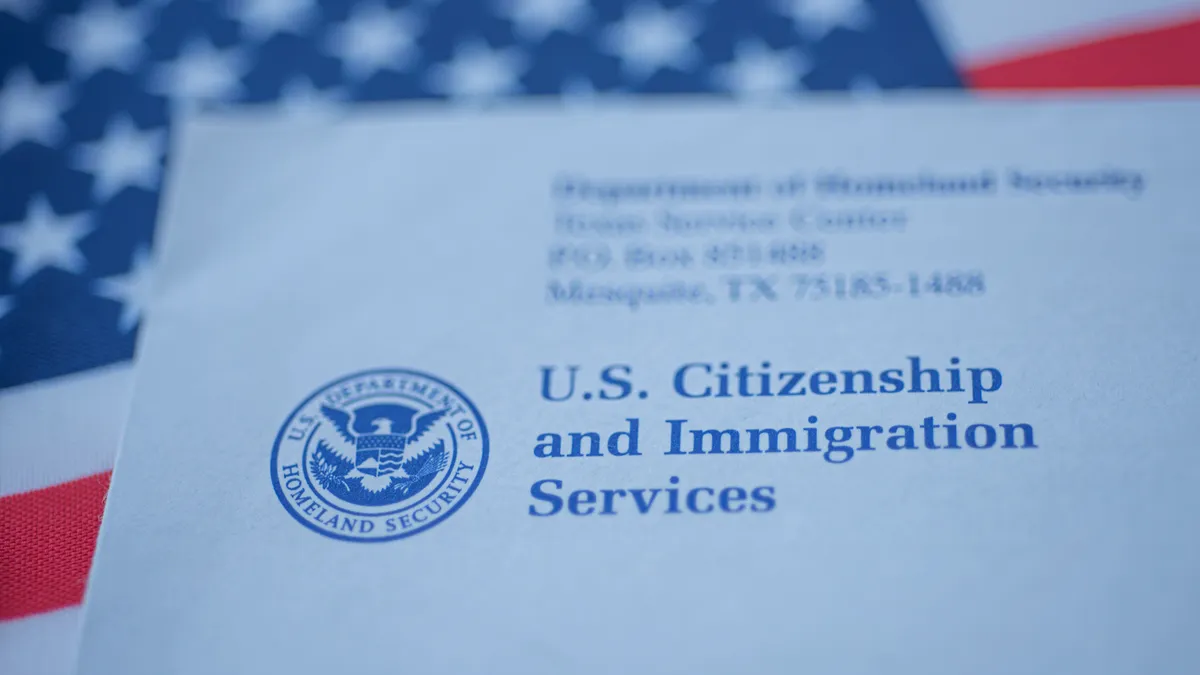This story is the final installment of a four-part series examining the digital divide's impact on K-12. For the rest of the series, click here.
When Kellie Woodfield's students had difficulty navigating their virtual learning platform because the various online tabs were too distracting, she simply held up her paper lesson to the camera for the remote learners to follow along.
When she needed students to submit answers for a math exercise, she searched for and found an app that allowed the students to draw or type in their answers.
And when one student's gross motor development was stalled, Woodfield spent weeks trying different strategies until the skill was mastered.
Teachers are generally optimistic problem-solvers, and special educators can be even more sanguine. For Woodfield, a special educator who teaches students with autism in the Northwest Tri-County Intermediate Unit 5 regional educational service agency in Edinboro, Pennsylvania, this has been a year of staying eternally hopeful that the strategies she was pioneering would connect with both her virtual and socially distanced in-person learners.
"I mean, you put on your thinking hat," Woodfield said. "You did what you had to do. You don't want your kids to fall behind. They've already fallen behind enough."
Zoom fatigue, unstable internet connections, and the loss of spontaneous social interactions were just some of the online learning hardships experienced by all students during the pandemic. Students with disabilities, however, had additional layers of barriers when their individualized supports couldn't convert to the all virtual format.
In fact, for some students, there were no possible substitutions for in-person learning. The months spent quarantining in their homes were lost instructional time, because their disabilities prevented their participation in online learning. Some likely regressed in their skill levels.
"One lesson learned from the past year is that schools should never be allowed to close long-term again," Reade Bush, an Arlington, Virginia, parent of two young children with disabilities, told a House subcommittee during a May 6 hearing. "For children with disabilities, schools are like hospitals in that schools are the primary providers of rehabilitative services such as speech, occupational therapy and physical therapy, and social-emotional learning to hundreds of thousands of kids."
The rates of students' regressions are being measured, and as most schools opened for in-person learning this spring, educators are getting a better idea of exactly where students need the most help.
But as special educators list all the hardships from this past year, they can also point to the positive impacts of virtual learning, including closer relationships between teachers and families, and more awareness and acceptance from other school system departments about the need for digital resources and accommodations that can support all learners, particularly students with disabilities.
"It's been eye-opening to see that in this time of great need, that everybody really stepped up and did their part for the betterment of our students," said Andrea Ireland, an IU5 early childhood educator of students with developmental delays.
The benefits of going digital
As soon as schools began shutting down in March 2020, school administrators predicted providing students with disabilities with meaningful services under the Individuals with Disabilities Education Act would be one of education's biggest struggles during the global health crisis. In a survey of 744 districts taken in the summer following the 2020 school closures, 73% respondents said it was "more or substantially more difficult" to provide appropriate instructional accommodations to students with disabilities during the pandemic, according to a brief from the American Institutes for Research.
That's because special education programs must follow IDEA and state rules. At its core, IDEA requires that every student who qualifies for special education services is entitled to a free, appropriate public education. The law also requires that students with disabilities have an individualized education program — created jointly by teachers, a student's guardian and even older students — that details the types and frequency of academic and behavioral interventions and accommodations, as well as how schools will measure individual students' progress toward their goals.
All the work to carefully plan and execute each child's individualized program had to be completely rethought when all students switched to virtual learning last year.
"Early in the pandemic, many schools tried to move what they were doing in-person to a remote format and had this been just a short-term solution, it would have worked," said Diane Myers, senior vice president of special education-behavior management practices at Specialized Education Services, Inc., which provides educational services to private and public schools.
As the pandemic dragged on and educators realized virtual learning wasn't just a temporary hiatus from in-person learning, many special educators incorporated digital strategies to better support students with disabilities, Myers said.
In fact, some of the broader strategies special educators used during remote learning had been promoted in the special education field for many years.
For example, universal design for learning is a framework for teaching and learning that allows multiple approaches for engaging students, presenting new lessons, and letting students demonstrate what they've learned. Under this framework, instructional supports like videos, texts and audio can be customized based on each learner's preference, and each learner has a choice in how they will express what they know.
That flexibility for instruction and expression of knowledge was helpful to both teachers and students, special education experts said.
Teletherapy was another area of success, educators said. Speech-language pathologists, psychologists, and occupational and physical therapists who were unable to meet with students in-person during the pandemic used video conferencing to work one-to-one with students on specific skills. Since scheduling online sessions was easier than in-person logistics, and because the therapists' travel times decreased significantly, they said their time with students was more efficient.
Another benefit to teletherapy was that the presence of parents during sessions helped therapists to coach parents on strategies to help their child's progress. Parents could then reinforce those skills beyond the school day.
Indeed, as learning moved online, the parents of students with disabilities had to become much more involved in their child's school day. In the best-case situations, parents and teachers exchanged information and strategies about effective ways to support a child's learning from home.
"Parents have felt more empowered to participate, and parents have really valuable information to contribute to those conversations, and so I think it's really helped build more of a partnership between schools and families," said Meghan Whittaker, director of policy and advocacy for the National Center for Learning Disabilities.
Additionally, another realized benefit discovered during the pandemic was virtual student IEP meetings. Typically, these meetings between school personnel and parents are held in-person and can sometimes feel intimidating for parents as they face the educators on the other side of the conference room table, according to parent advocates. Special education directors and parents say in-person IEP meetings were also difficult to schedule, as parents would often need to take off work to attend, and schools had to coordinate different IEP team members' meeting times.
But when everyone met virtually, scheduling was easier, and all the IEP members were on-screen at their homes or offices, which contributed to parents' perspectives as being equal partners on the IEP team, said Myers.
"Having had this sort of intimate look into people's lives over Zoom has made interactions, just by design, more personal and more relational, you know? And I think teachers, for the first time, have gotten that bird's eye look into what students' lives look like — and families for that matter," Myers said.
‘So many different reasons' for inaccessibility
But not all students with disabilities were able to receive at-home learning assistance from caregivers, and not all teachers had the capability or training to provide differentiated instruction and supports remotely.
Eighty-six percent of districts provided teachers with strategies for one-to-one or small group interaction for students with disabilities while schools were closed for in-person learning, according to the AIR survey. The survey also found that 85% of districts provided schools with at-home strategies for involving families in providing accommodations for students with disabilities.
State and national agencies and organizations also rushed to offer professional development and resources for remote instruction for special educators. For example, technical assistance centers affiliated with the Office of Special Education Programs held various webinars and issued toolkits for how to adapt interventions for online use. Groups such as Educating All Learners Alliance, NCLD and many others published resources on strategies for serving specific subgroups of students with disabilities. Special educators also turned to their professional networks, their coworkers of the internet for advice and recommendations.
Although trainings and resources seemed plentiful, they might not have been effective. Preliminary findings from a NCLD survey show fewer than half of all general education teachers found the training they received over the last year helpful. And teachers in high-poverty schools were significantly less likely to have found training helpful on the topic of "how to use virtual learning management platforms and technology," according to Whittaker.
Even when teachers found appropriate online instructional approaches, technical barriers, like lack of closed captioning or the incompatibility of students' assistive technology with a school's learning platforms, threw up instructional roadblocks.

"I think that's something we don't often talk about, because you know there's a learning curve for everyone in this virtual space," Whittaker said. "For kids with disabilities, that hurdle may have been a bit higher just due to accessibility considerations, accommodations and virtual settings."
Schools also struggled with student engagement and participation in online learning. "I think a lot of us were so worried about the instruction [and] what that was going to look like, we missed that critical step of, like, 'OK, how are we going to incentivize kids for coming to school,'" Myers said.
Even if the technical and instructional pieces fit seamlessly into the virtual classroom, some students with disabilities just couldn't learn outside the school building. Those are the students most on Marcie Lipsitt's mind.
Lipsitt, founder of the Michigan Alliance for Special Education, advises families about their special education procedural safeguards. During the pandemic, Lipsitt said teachers should have done more to support students' individualized services during online learning, and that schools should have stayed open for those students who require more intensive supports. During the pandemic, Lipsitt has more than doubled the number of disability complaints she typically files with the U.S. Department of Education's Office for Civil Rights in her work with families.
OCR has been investigating several school systems for alleged FAPE violations during the pandemic. In just the first few months of 2021, OCR has opened investigations for disability discrimination related to FAPE violations in 99 state and local school systems, an OCR database shows. (An investigation does not mean a determination of a violation has been made, and it is unknown whether these investigations are connected to virtual learning.)
"The difference this year is that, at least in the world I'm in, the majority of districts are not providing a good faith effort to meet the needs of children with special needs," Lipsitt said, explaining the students she advocates for did not receive accommodations online, had their promised services reduced or were missing assistive technology their IEPs required.
"There were so many different reasons why children have not been able to access instruction, and that's for the kids who could if they knew how," Lipsitt said.
The expected rise in special education litigation against school systems because of alleged failings to provide special education services during remote learning is concerning to school system attorneys and special education professionals.
"There is no diet or light FAPE," said Mitchell Yell, a special education professor at the University of South Carolina and board member of the Council for Exceptional Children. "You have to deliver free, appropriate public education, and sometimes virtual is not the best way to do that."
Many school systems recognized this, and as they phased in campus reopenings, they invited students with disabilities as one of the first subgroups of students to return for in-person learning. According to the Institute of Education Sciences' School Survey Dashboard for 4th-graders, 47% of schools prioritized in-person learning for children with disabilities in March. The figure was 45% in February.

Going forward
As in-person learning opportunities expand, Yell said it will be important for school districts to monitor students' progress toward IEP goals and proactively address students' needs if there are learning losses. If schools wait too long to address students' regressions, a state monitor or hearing officer will likely require them to do so, he said.
Pennsylvania's Northwest Tri-County Intermediate Unit 5 is not waiting to be told it's out of compliance, Special Education Director Christy Carruci said. The educational service agency has been reviewing each student's IEP progress and comparing the current skill levels to pre-COVID-19 progress data. If a loss of academic or functional skills is discovered, a student is offered opportunities for additional services, or what the Pennsylvania Department of Education calls COVID Compensatory Services.
Carruci said in early April the skills level data the agency has reviewed show students aren't as behind as educators expected. "We'll see how it turns out over the course of next year and maybe the year after, but we will still be offering services to families and to students in those ways," she said, adding that expanded learning opportunities and supports also will be available this summer.
Many special education advocates hope this experience with online learning will cause school systems to reflect on what went well and put policies in place to keep those effective efforts active.
And even as schooling returns to a more typical in-person model, schools should continue to teach students digital skills and acceptable online behaviors, said Elizabeth Barker, accessibility research manager at NWEA. "Hopefully, there's not another long-term shutdown again, but students will likely use those skills in online high school and college courses, as well as in employment," Barker said.
School administrators should also boost professional development in digital strategies for special educators, Whittaker said. "That's something that I think needs to emerge from this, is more leadership at the district level to provide teachers what they need so that they don't have to be perusing Pinterest" for virtual intervention ideas, she said.



